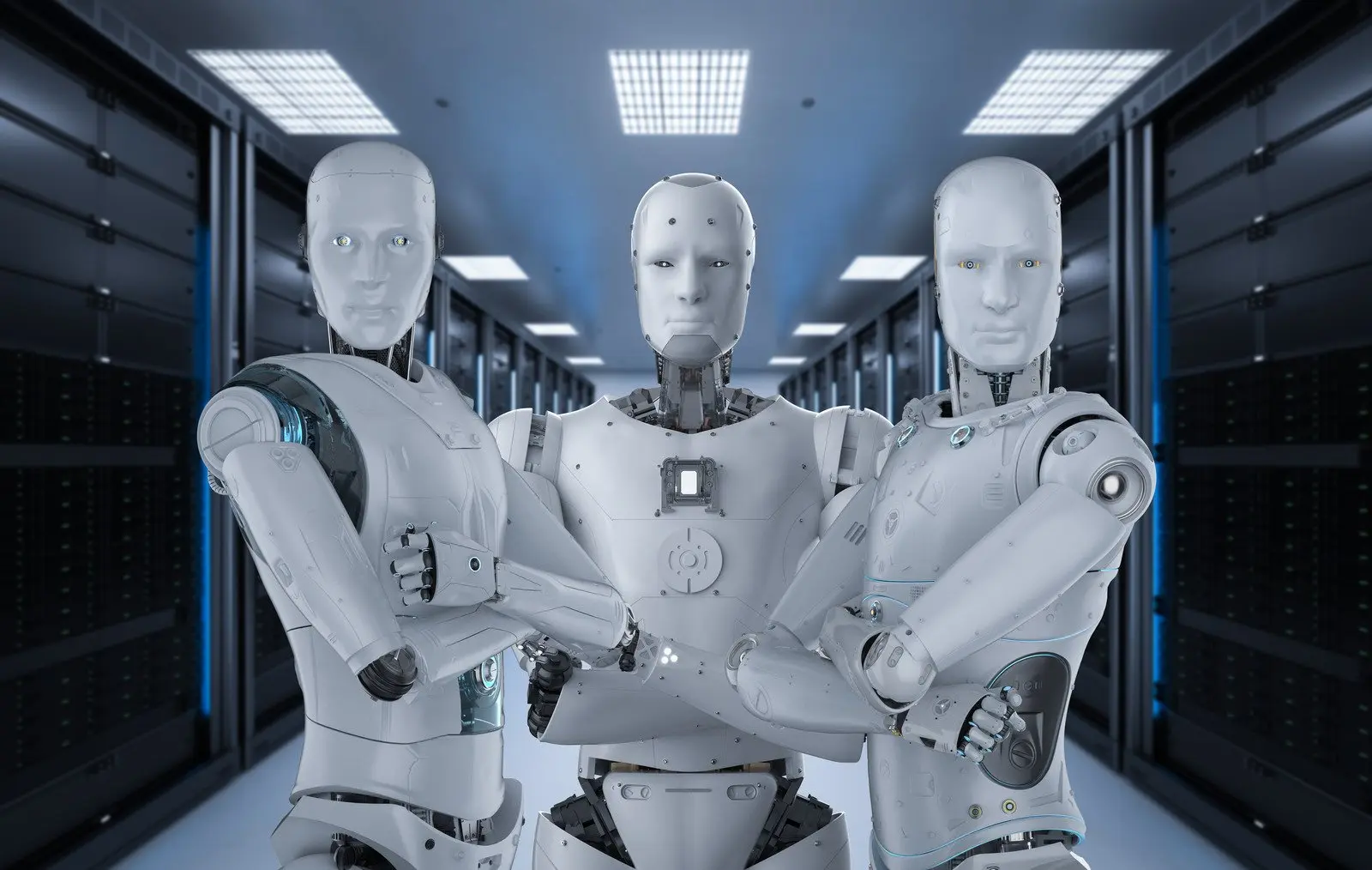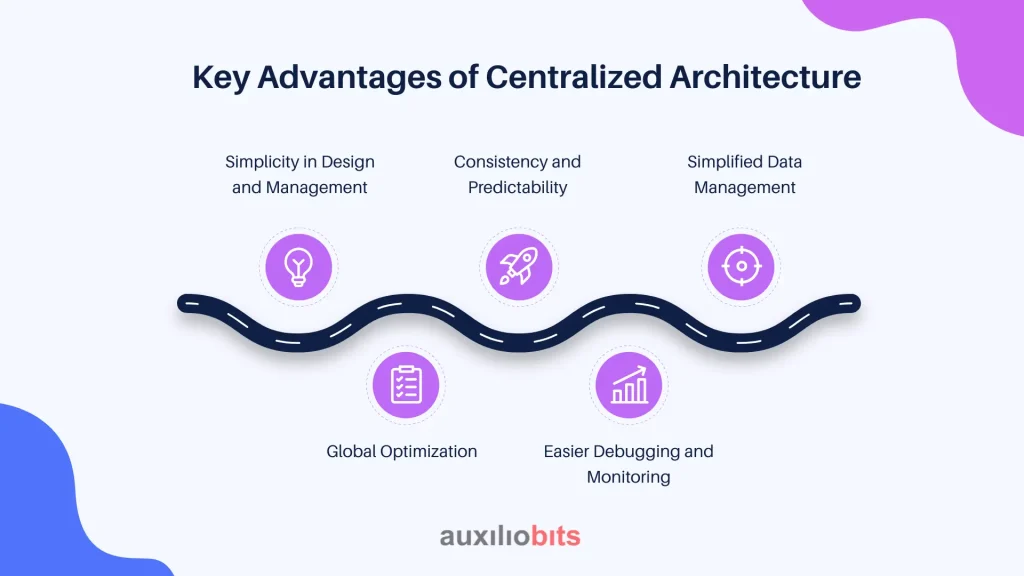
Key Takeaways
- In modern AI ecosystems, agents no longer function in isolation. Collaborative models are essential to tackle complex tasks across industries.
- Centralized Architectures are easier to manage, debug, and optimize, but suffer from single points of failure and limited scalability.
- Distributed architectures enable resilience and scalability. They are Ideal for dynamic and large-scale systems, distributed models improve fault tolerance and responsiveness, but are harder to design and coordinate.
- Hybrid architectures allow system designers to balance control, scalability, flexibility, and resilience based on use case demands.
- Architecture choice shapes the system’s future. The collaboration model impacts performance, security, scalability, and ethical dimensions of AI systems—making it a foundational decision in AI design.
In today’s time, where artificial intelligence has grabbed all the attention, innovative agents are no longer confined to functioning alone. They are now designed to collaborate, functioning together to achieve goals that were once difficult to achieve. For example, previously, it was not easy for a single agent to fulfill business goals and offer optimal results. But with numerous agents functioning collectively, they can achieve everything feasibly.
This collaborative approach takes pride in offering numerous perks, from robotic systems coordinating in a factory to intelligent agents optimizing intricate business procedures. Nevertheless, to function effectively, an important architectural decision for the agents has to be made. The question is whether their communication and decision-making can be structured suitably. This answer involves two major approaches: centralized and distributed architectures.
Understanding these models is imperative to anyone who is a part of designing, deploying, and appreciating the benefits and limitations of artificial intelligence systems.
Also read: How AI Agents Help Reduce Inventory Holding Costs?
Understanding the Essence of AI Agent Collaboration
Before understanding centralized and distributed architectures, let us identify what we mean when AI agents collaborate. Imagine a team of experts who have been allotted a project that is difficult to handle and has numerous tasks. Now, in order to achieve the results successfully, they must communicate, share project updates, resolve issues, and make decisions together. In the world of AI, smart agents are independent entities that understand the environment and take actions accordingly. When these agents form a multi-agent system, their collaboration models define the benefits of their collective intelligence.
Centralized Architecture: How an Orchestrator Leads Agents
In AI agent collaboration, a centralized architecture operates similarly to an orchestra. Both of them operate with a single conductor only. This model features a central entity, often called a master agent, control unit, or coordinator. It takes full responsibility for directing and handling all the other agents. The central authority has an update regarding the status, decision-making process, processing details from other agents, plans, instructions, and commands, ensuring they function properly.
How it Works: A Closer Look
When we talk about a centralized setup, the interaction flow is predominantly hierarchical. Single agents report their progress, observations, and local states to the main controller. The main controller agent then identifies this information, examines patterns, and makes suitable decisions. These decisions are then disseminated back to the single agents as certain tasks or behavioral directives.
For example, in a robotic warehouse, a central control system might allot certain inventory retrieval tasks to individual robots, keep a check on their process, and optimize their paths so that collisions are avoided.
Key Advantages of Centralized Architecture:
The benefits offered by a centralized architecture are:

1. Simplicity in Design and Management:
In a centralized architecture, there is a single point of control only. This is why there are no major obstacles. One can handle everything without any hassle. Therefore, it becomes simple to design, implement, and maintain. All logic for coordination and decision-making resides in one place. Therefore, it becomes easy to understand the system’s behavior and find an important detail.
2. Global Optimization:
Because the central agent has a complete overview of the system, it can make decisions when needed. This decision allows them to resolve any conflict. In addition to this, it also helps them with allocating resources and optimizing performance.
3. Consistency and Predictability:
A centralized architecture makes sure that there is consistent behavior across all the agents. This is because their actions are governed by a single set of decisions and rules. This predictability can be crucial in applications where precise and repeatable outcomes are essential.
4. Easier Debugging and Monitoring:
When an issue arises, tracing the problem back to its source is often simpler in a centralized system, as the central controller acts as a bottleneck for information flow and decision points. Monitoring the system’s health and performance is also streamlined.
5. Simplified Data Management:
Data collection and processing can be consolidated, simplifying data governance and ensuring a unified view of the system’s data.
Use Cases for Centralized Architectures:
Centralized architectures are best suited for environments where the task is relatively well-defined, the number of agents is manageable, and strict control and predictability are prioritized over resilience and extreme scalability.
In a manufacturing plant, a central control system might orchestrate a fleet of robots on an assembly line, ensuring precise timing and coordination for repetitive tasks.
A central AI system could monitor traffic flow across a city and dynamically adjust traffic light timings to optimize vehicle movement, given its global view of congestion.
In a basic video game, a central AI might control all non-player characters (NPCs) based on a global game state.
While many cloud services are distributed, certain internal AI components within a cloud provider might operate with a centralized control plane for specific tasks. For example, a single AI model might manage resource allocation for a cluster of servers.
Distributed Architecture: The Self-Organizing Swarm
In stark contrast to the centralized model, a distributed architecture for AI agent collaboration embodies the principle of decentralization. Here, there is no single, all-powerful coordinator. Instead, decision-making authority, information processing, and control are spread across multiple autonomous agents. Each agent operates based on its local perceptions, knowledge, and goals, and directly communicates with its peers to achieve collective objectives. The overall system behavior often emerges from the complex interactions of these independent agents rather than being dictated by a master plan.
How it Works: A Network of Peers
In a distributed system, agents communicate peer-to-peer. They exchange information about their local state, observations, or intentions with neighboring agents or those relevant to their current task. Agents make decisions based on this local information and predefined rules for interaction and cooperation. For instance, in a swarm of autonomous drones mapping an unknown area, each drone might decide its next movement based on its immediate surroundings, communicating with nearby drones to avoid collisions and ensure full coverage. There’s an emphasis on autonomy and local intelligence, with the collective goal achieved through self-organization and emergent properties.
Key Advantages of Distributed Architecture:
The benefits of distributed architecture are:
1. Enhanced Resilience and Fault Tolerance:
This is a cornerstone benefit. If one or even several agents fail, the rest of the system can continue to operate, often with some degradation in performance, but without catastrophic failure. This makes distributed systems highly robust and suitable for critical applications.
2. Superior Scalability:
Adding more agents to a distributed system generally increases its capacity and performance proportionally. There’s no single bottleneck to limit growth, allowing the system to handle larger workloads and more complex problems by simply adding more participants.
3. Increased Flexibility and Adaptability:
Agents in a distributed system can adapt more readily to dynamic environments and unforeseen changes. Their localized decision-making allows for faster responses to local events, and the system as a whole can evolve its behavior through the interactions of its parts.
4. Reduced Latency:
Decisions are made at the “edge”—closer to where the data is generated and actions are needed—leading to faster response times and improved real-time performance.
5. Efficient Resource Utilization:
Distributed systems can often leverage geographically dispersed or otherwise underutilized computing resources (e.g., edge devices, individual user machines in a peer-to-peer network), leading to more efficient overall resource use.
6. Improved Privacy and Security:
By avoiding a single central repository of all data, distributed architectures can inherently offer better data privacy and security, as sensitive information is not concentrated in one vulnerable location.
Use Cases for Distributed Architectures:
Distributed architectures excel in dynamic, unpredictable, and large-scale environments where resilience, scalability, and adaptability are paramount.
Swarm Robotics:
A group of small, autonomous robots performing tasks like environmental monitoring, search and rescue, or decentralized construction. Each robot makes local decisions and communicates with its neighbors.
Blockchain and Decentralized Finance (DeFi):
These systems are fundamentally distributed, with no central authority controlling transactions. Each node in the network verifies and processes transactions independently.
Peer-to-Peer (P2P) Networks:
File sharing systems like BitTorrent or distributed computing projects (e.g., Folding@home), where individual computers contribute resources and communicate directly.
Smart Grids/IoT Networks:
Intelligent agents are managing energy distribution in a smart grid or coordinating data from countless IoT sensors, making local decisions to optimize energy use or respond to environmental conditions
Federated Learning:
A distributed machine learning approach where models are trained on decentralized datasets (e.g., on individual mobile devices) without centralizing the raw data, enhancing privacy.
Hybrid Architectures: The Best of Both Worlds?
Recognizing that both centralized and distributed models have distinct strengths and weaknesses, many real-world AI systems opt for hybrid architectures. These approaches strategically combine elements from both paradigms to leverage their respective advantages while mitigating their drawbacks. The goal is to strike a balance between control and autonomy, scalability and predictability.
Common Hybrid Models:
1. Hierarchical Distributed Systems:
This is a popular hybrid. It involves multiple localized, distributed clusters of agents, each managed by its local coordinator (a mini-centralized system). These local coordinators then report to a higher-level, potentially centralized, manager or even coordinate directly with each other in a distributed fashion.
- Example: A fleet of autonomous delivery robots might have a local coordinator managing robots within a specific neighborhood (e.g., for traffic routing and charging), and these neighborhood coordinators then report to a central logistics hub that manages overall demand and regional resource allocation.
2. Market-Based or Auction-Based Systems:
In these models, a central “marketplace” or auctioneer might exist to facilitate resource allocation or task assignment among otherwise autonomous agents. Agents “bid” on tasks or “offer” their services, and the central entity simply matches them or resolves conflicts.
- Example: In a cloud computing environment, a central service might auction off computational tasks to various distributed AI agents that specialize in different types of processing.
3. Federated Learning with Central Aggregation:
While federated learning is fundamentally distributed, it often involves a central server that aggregates the learned model updates from individual devices. This central server doesn’t see the raw data, but it orchestrates the global model training process.
- Example: Google’s Gboard uses federated learning to improve its next-word prediction. Individual phone keyboards train small models locally, then send encrypted updates to a central server, which averages them to create a better global model without ever seeing personal typing data.
4. Blackboard Architectures:
This model uses a shared data repository, often called a “blackboard,” where various specialized AI agents can read and write information. A central control mechanism might decide which agents can access or modify certain parts of the blackboard, or agents might operate asynchronously based on changes they observe.
- Example: In a complex design problem, different AI agents specializing in structural analysis, material science, and cost optimization might contribute their findings to a shared blackboard, and another agent might synthesize these findings to generate a final design.
Benefits of Hybrid Approaches:
It can achieve a better balance of efficiency, resilience, and scalability than pure centralized or distributed models
Flexibility for Complex Tasks:
Allows for complex problems to be broken down into manageable sub-problems, with different architectural approaches applied where they are most effective.
Gradual Implementation:
It can sometimes allow for a more incremental transition from a centralized to a more distributed system, or vice versa, as needs evolve.
Challenges of Hybrid Approaches:
Increased Architectural Complexity:
While offering benefits, hybrid systems are inherently more complex to design, implement, and manage than purely centralized or distributed ones.
Interoperability and Communication:
Ensuring seamless communication and coordination between different architectural layers or components can be challenging.
The Future of AI Agent Collaboration
As AI systems become more sophisticated and are deployed in increasingly complex and dynamic environments, the discussion around agent collaboration models will only intensify. The trend is moving towards more adaptive, self-organizing, and robust systems, which often points towards distributed and hybrid architectures. However, the simplicity and global optimization capabilities of centralized models will always hold their place in specific contexts.
The choice of architecture is not just a technical one; it has profound implications for the system’s performance, resilience, security, and even ethical considerations like transparency and control. As we continue to build ever more intelligent and autonomous agents, understanding these fundamental collaboration models will be essential for creating AI systems that are not only powerful but also reliable, scalable, and beneficial to society. The symphony of AI agents, whether led by a single conductor or a network of self-organizing musicians, promises to create remarkable innovations in the years to come.








